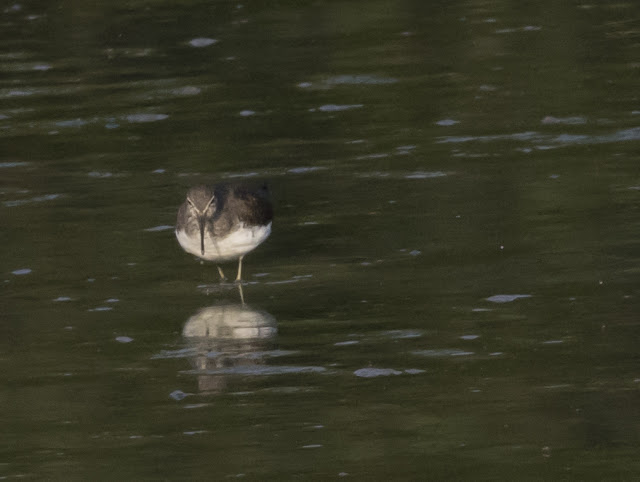Here is one of the relatively few Common Gulls, Larus canus, seen from Bloor's Wharf. Notice the dark blue-grey on the back. The UK summer population is 49,000 but this swells in winter to 710,000, according to the RSPB. Populations are supposed to be declining, making it of conservation concern. In Europe they breed to the north of continent, and the same northerly pattern is found in the UK. Their breeding range is most continuous in Scotland, often on colonies on inland lochs.
Their diet is quite varied, including fish, insects, carrion, small mammals and rubbish - they may frequent rubbish tips, often more often in harsh weather. Over the winter period they may rely a lot on earthworms, on ploughed or grassy fields.
Adult summer Mew Gull probably is not the first plumage to be expected in The Netherlands. Therefore this page focus on Mew Gull brachyrhynchus vs Mew Gull canus in 1st cycle, 2nd cycle and adult winter plumage. Below is a list of "classic" differences, which may be more prominent on one bird than it is on the other, so please always consider individual variation in either taxon.
Classic Mew Gull canus in adult winter:
- very dark iris,
- band on bill,
- bill colour rather greenish yellow, not vivid yellow,
- leg colour rather greenish yellow, not vivid yellow,
- very delicate fine spotting 'often pencil streaking' on winter head,
- this spotting concentrated on crown and not in hindneck; also not running down to sides of breast (clean breast),
- short tongues op P10-P8,
- very large mirror on P10 often completely merged with white tip,
- large mirror on P9,
- sub-terminal black on P6 points upwards along outer edge of feather,
- often no or little black on P5,
- large white tips on outer primaries.
Classic Mew Gull brachyrhynchus in adult winter:
- speckled, but medium dark to paler iris,
- even in winter no band on bill,
- bill colour more vivid yellow,
- leg colour more vivid yellow,
- blotchy, mottled winter head,
- this mottling concentrated in hindneck (which sometimes solidly dark); also running down to sides of breast creating scally pattern,
- long tongues op P10-P8, tongue of P9 >50% of visible length,
- obvious white tongue tips 'string of pearls' with sharp division between white and grey on P8,
- medium-sized mirror on P10 often with complete sub-terminal band,
- small mirror on P9,
- black on P9 not reaching prmary coverts,
- sub-terminal black on P6 of evenly width, not upwards along outer edge of feather,
- often broad 'symmetric' black band of even width on P5,
- sometimes spot on outeweb of P4,
- outer primary tips becoming smaller outwards,
- inner primaries and all secondaries with large white tips.
EXTRA'S
- delicate small head on long-looking neck,
- delicate fine bill,
- slightly darker than Mew Gull canus,
- P10 patterned like cachinnans, canus more like michahellis.
This individual looked like an ordinary Common Gull, but has a darker nape to the neck and a darker tip to the bill. I also can't see much at all of the white pearls or mirrors on the wing. There also seems to be a dark brown mark on the slightly turned-up wing. All these suggest a second winter bird (2cy/3cy bird) rather than an adult, and this is backed up by the photos on the Gull Research Organisation page.


























































